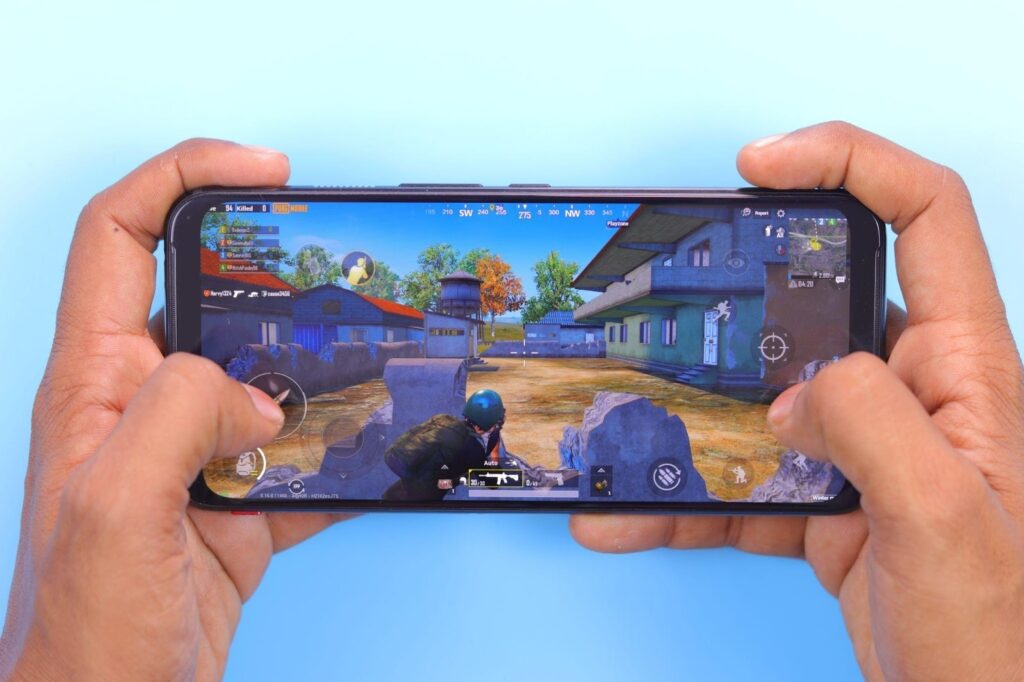Newzoo reported that global gaming revenue reached $187.7 billion by the end of 2024, with mobile gaming accounting for $92.6 billion of that total. The data also showed a 2.1% year-on-year growth for the overall gaming market. It’s actually what people are choosing to play.
Gamers are turning to snackable, short games that include slots played in seconds to puzzles that fit neatly between errands. Many are now wondering whether epic story-driven titles remain relevant in a digital era, where bite-sized experiences are ruling the roost.
Bite-Sized Gaming Is Everywhere
People often think about games like Fall Guys and Among Us when considering bite-sized games. These titles have shaped short session gameplay and combined simplicity with social tension and fast round rewards. Even word games like Wordle prove that a two-minute session can capture as much attention as a long grind. One key element used by many bite-sized games is that they offer greater accessibility without a steep learning curve or endless tutorials that require entire evenings to master.
Another common bite-sized gaming experience is the range of free-to-play slot games listed by Adventure Gamers. People don’t even need to download the slot games or spend money when enjoying Sweet Bonanza, Games of Olympus, Blood Suckers, or Sugar Rush. The slots provide instant accessibility for short session play that allows players to practice on various themes with clearly-defined return-to-player ratios before they spend actual money.
Match-3 puzzles, hyper-casual arcade-style titles, and idle clickers offer players similar bursts of adrenaline that suit those who want the quick satisfaction of a game without committing hours to sprawling campaigns. These titles have dominated app stores for years, and developers know that designing games that fill daily cracks is a winning ambition. Besides, cloud streaming, smartphones, and faster internet connections have only supported the short-form games that don’t require players to have AAA budgets or endless hours.
Do Gamers Still Have Time for Epic Titles?
Long-form titles haven’t vanished, but they’re changing to adapt to the demands of modern gamers. Titles like Starfield and Elden Ring maintain dedicated audiences, despite competing against hundreds of instantly available games on smartphones. Major studios simply respond by adding mobile tie-ons and “quick play” modes to keep their worlds alive in the age of smaller gameplay doses.
Even player habits are changing. While many fans continue to value the artistic detail and grandiose storytelling in epic adventures, fewer gamers have the time to dedicate to 100-hour campaigns. Gamers still play big titles for months, allowing them to dip out between shorter distractions. Others depend on streaming content, watching stories unfold through content creators rather than playing games themselves. Modern player habits reveal that the experience still matters, but convenience is now important.

The rise of bite-sized gaming has also convinced major studios to rethink pacing. Open-world games now have autosaves, faster checkpoints, and modular side missions players can complete in 15 minutes. Studios aim to make epic titles more compatible with modern demands. Even story-heavy titles have bite-sized experiences like limited-time events, daily challenges, and compact missions.
Instant Play and Modern Attention Spans
Today’s player is busier than ever, trying to juggle social media, work, and entertainment. Games that offer instant play without penalties become less of a commitment and more of a fast mood booster. Gamers deal with a heavy cognitive load, and designers are creating games for decreasing attention spans, which has led to the rise of bite-sized gaming. It explains why mobile rhythm games, hyper-fast racing titles, and trivia apps have become so popular. The feedback loop provides an immediate reward.
Instant gameplay also removes entry barriers. Cloud technology enables gamers to tap a link and start playing in seconds, skipping updates and downloads. This type of access changes gaming from an experience that requires setups to something as casual as social media scrolling. Millions of players who don’t own consoles now play games daily.
The economics make sense for developers. Smaller projects reduce costs while reaching larger audiences through faster development cycles. Some even use ad models or microtransactions to reward fast sessions instead of long grinds, which has also created a new business model for gaming studios.
Balancing Convenience With Depth
Game developers must balance many elements to deliver masterpieces that grab the attention of global audiences. Balancing the bite-sized expectations focused on accessibility and convenience with the traditional elements of storytelling and depth is quite the act, but it redefines how players engage with games. Adding the appeal of the convenience of mobile slots to the console gamer’s daily activity is about rewarding instant curiosity while fulfilling the demand for immersion and achievement.
Technology continues to bridge the gap between console and mobile performance, which allows developers to design immersive experiences on smartphones. Even the Steam Deck blurs the lines between epic titles and quick sessions. Developers who focus on balancing quick rewards with deep narratives through carefully designed missions and mini-narratives are the ones who will lead the next era of gaming. Developers can’t choose one anymore. It’s about delivering both experiences in a single title.


